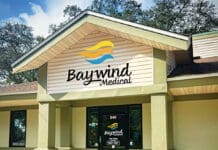Now that the Medicare Annual Election Period (AEP) is over (ended December 7th), you can finally take a breather from all those ads, phone calls and mailers. Come January 1st, you will have a chance to try out your new Medicare Advantage, Supplement and/or Prescription plan.
If you suddenly discover the plan you selected during the AEP is not right for you, all is not lost. You will get one more bite at the apple to make changes to your plan.
As with many situations, in order to get a good outcome, you first have to ask the right questions. In this case, the questions you should ask first are:
Did you sign up for a new Advantage Plan or a stand-alone Part D prescription drug plan during the last Annual Enrollment Period (AEP)?
Do you have an existing Advantage Plan or a stand-alone Part D prescription drug plan that renewed with a January 1st effective date?
If the answer to either of these questions is yes, then the Medicare Open Enrollment Period (OEP) is very important to you.
The OEP runs annually from January 1st to March 31st.
During this time, Advantage plan holders are given the option to make certain changes to the plan they selected in the AEP.
These allowed changes are:
- Cancel your stand-alone Part D prescription drug plan
- Drop your Medicare Advantage Plan and return to Original Medicare (A & B only)
- Enroll in a stand-alone Medicare Part D prescription drug plan
- Elect to change from one Medicare Advantage Plan to another
Let’s a look at each option a bit deeper. First, why would someone elect to cancel their stand-alone Part D prescription plan? The only reason one could have would be it was being replaced by other qualifying coverage. If you cancel without replacing, penalties will accrue and be waiting for you when you do put this coverage back in place at a later date. Plus, those penalties will be with you for life!
Second, there are a few rare circumstances when it makes sense for someone to cancel an Advantage plan and return to Original Medicare known as Part A and Part B. Usually this would have something to do with provider networks which are insufficient for the beneficiary. Again, this rare circumstance would require you to also remain in or enroll in a stand-alone Part D prescription drug plan in order to avoid accruing the future penalties I just mentioned.
Again, enrolling in a stand-alone Part D prescription drug plan is a requirement if you do not have qualifying coverage elsewhere and want to avoid those penalties. If you neglected to get that done during the AEP, now is the time to take care of this.
Last, some folks have a change of heart once they see the detailed materials of the Advantage plan they enrolled in during the AEP. Perhaps you find your HMO plan does not have the providers you need but, a PPO plan does. Or, perhaps the terms of coverage are better in a plan different from your current plan. Maybe, another plan costs less (or even $0!).
You don’t need any reason to switch plans provided you do so before the OEP expires on March 31st. Just remember, you only get one chance to make this change. Once you do, you will have to keep that plan until the next AEP, which begins on October 15th of every year.
The best options for your particular situation should be thoroughly discussed with your insurance agent/broker to make sure you have all the facts about the choices you may be thinking about and, get all your questions answered.
Greg Durette is a qualified, licensed agent with Florida Health Connector providing Medicare throughout the State of Florida and is based in Niceville. He has been in the insurance industry for over 40 years and can be reached at his office at 850-842-2400 or his mobile at 978-509-2941.



























































